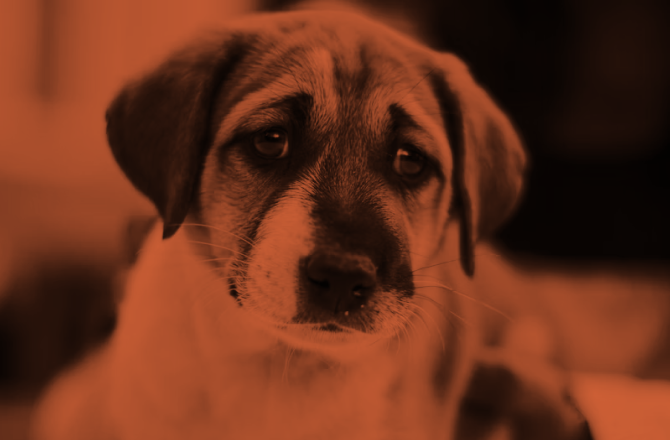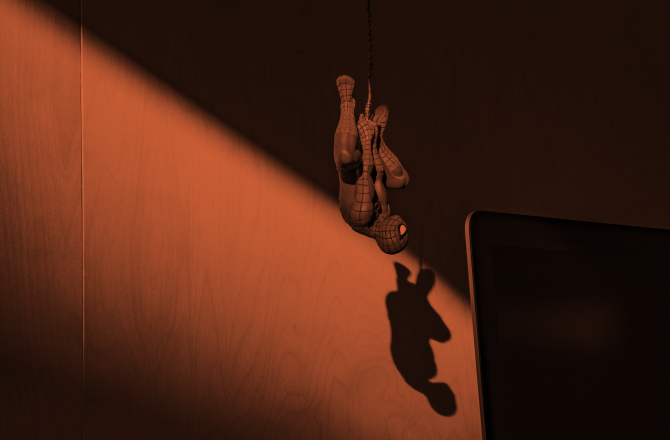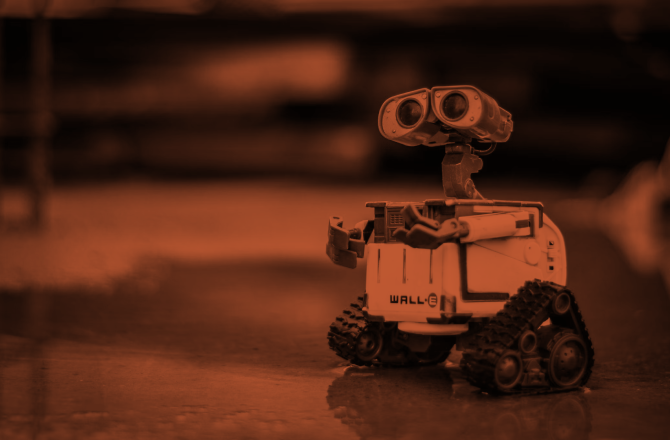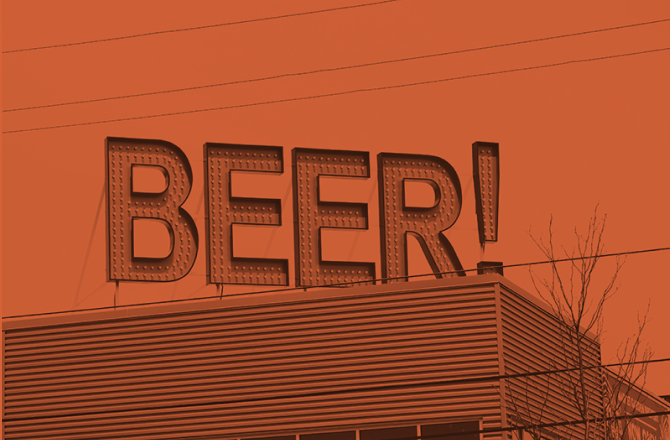An article on digital efficiency
UX is good for your business... you just had to know it!

Have you created digital products, or are you planning to develop new ones to meet your organisation’s needs?
- To inform?
- To raise awareness?
- To facilitate work processes?
- To sell?
- To put people in touch with each other?
- Raising consciousness?
This article explains why you need to approach the design of your digital products with a suitable methodology to (finally) achieve digital efficiency.
What is digital efficiency?
It’s about challenging established product design processes and starting the UX design stages with purely strategic considerations.
- Why do we make this product?
- Will it interest anyone?
It’s all about:
- identify, formulate and prioritise your business objectives,
- ensure that these objectives correspond to the real needs of your audiences.
You are efficient if:
- your site enables you to make conversions,
- your intranet offers practical services to your employees,
- your products or services can be easily found on search engines,
- your business applications are used and appreciated by your employees,
- your mobile apps are popular with many users,
- your content is captivating and provides added value for readers,
- …and so many other good reasons to take a serious look at your digital efficiency…
You are inefficient if:
- you feel that your digital projects are not realising their full potential to help your business and that you can’t see how to improve them.

Start by identifying your situation.
You are certainly in one of the following two situations.
1. You want to create a new digital product
Start by defining this product’s main objective. How will it contribute to your digital efficiency? Then, make sure that all the people involved in the project share a clear vision of these objectives.
2. You want to improve an existing digital product.
Start by identifying the gaps and weaknesses in the product. Understand the frustrations of your users and employees so that you can set a new direction and examine the product from a new angle—its digital efficiency.
What happens next?

An essential prerequisite for your digital efficiency.
The first truth that your UX designer will reveal concerns the absolute purpose of any digital product:
offer the right content to the right audience.
And if possible at the right time and in the right tonality!

I therefore base my UX process on the ‘content-first’ recommendations: the design of a digital product necessarily begins with the definition and creation of its content.
This is a two-stage process:
- content strategy: what do we want to communicate?
- content design: how are we going to present this content?
This first stage helps you lay solid foundations for the design of your products:
- your content strategy will be developed in line with your business objectives.
- The design of your content will be adapted to the specific characteristics of your audience.
Designing a digital product is all about doing things in the right order.

A UX designer is also a rigorous project manager who knows how to stay on course when designing future products, especially when it comes to the initial content strategy.
A UX designer knows that all the next stages of the work…
- UX research,
- user journeys,
- information architecture,
- interface design,
- content design,
- technical decisions…
…depends on how we answer the fundamental question: what do we want to communicate?
Step 1: knowing where you're going - collaborative design

Defining your business goals and profiling your audiences is a collaborative process. It is essential to involve all the stakeholders who are interested in your digital products’ effectiveness. This will allow you to bring your staff together around a tangible vision of the product to be optimised or created in one or more co-design workshops.
The UX designer will organise engaging and productive workshops that will enable you to gather the wishes and needs of your teams in the shortest possible time.
He will also produce a summary of these workshops in the form of an exhaustive brief for your future product.
The objectives of co-design are as follows:
- allow all your employees to express their needs,
- set measurable objectives (KPI’s),
- profile your audiences,
- list and prioritise functionalities,
- obtain a medium- and long-term vision of the product to be created,
- know how to measure your future digital efficiency.
Step 2: knowing what you want to communicate - the content strategy

This stage aims to define the content that effectively conveys your key arguments to your target audiences. We will create a dialogue with these audiences to bring them closer to your brand. Content strategy is a refined alchemy that makes a human aspect in a digital context.
The UX designer will take several conceptual steps to effectively address audiences, using attractive, understandable, and memorable content. They are aware that your target audiences are all victims of infobesity (an excessive demand on their cognitive capacities due to an overabundance of information) and that your content must get to the heart of the matter, making it easier for them to make decisions!
The objectives of the content strategy are as follows:
- analyse whether your current content matches your business objectives (content inventory),
- understand the likely behaviour of your target audiences (user journeys),
- organising content to facilitate access (information architecture),
- know how to address your audience in the best possible way (editorial tone and accessibility),
- evaluate the best channels for reaching audiences (visibility),
- decide how you can facilitate conversions, or put your digital efficiency into practice (CRO – conversion rate optimisation).
Step 3: knowing how to be attractive, content design

It’s only at this third stage that we come to the concepts of design. Having identified your objectives, profiled your target audience and determined all the content needed for effective communication, we can now structure this content to present it to your audience in the best possible way.
The UX designer will involve content creators to give your product the finishing touch: convincing your audiences and helping them to make the best decisions:
- call on your services,
- buy your products,
- collaborate on your working tools,
- acquire new knowledge,
- contact you,
- let their network know that you exist…
As I mentioned at the beginning of this article, digital efficiency is all about offering the right content to the right audience… and in the most appropriate form. Whether it’s text, infographics, illustrations, photos or digital indicators, content design makes the most complex subjects accessible to all your audiences.
The objectives of the design strategy are as follows:
- facilitate interaction between users and your content (interface design),
- create immersive content that captivates audiences (storytelling)),
- create navigation flows to guide your audiences to the content that’s relevant to them (the art of the Landing Page),
- create visual content that makes your content easier to understand and remember (immersive content),
- ensure that the functional texts displayed in the interfaces facilitate fluid interaction (UX writing).
Cross-disciplinary stages

The steps required to design efficient digital products are theoretical and methodical. As in any other research discipline, UX theories need to be validated.
Firstly, we must regularly involve users to test the validity of our hypotheses during the design phase. Whether it’s a question of editorial tonality, access to content, or understanding of the actions required, we must always trust users’ opinions.
Then, by regularly analysing the objectives set at the initial design stage, monitoring the KPIs (measurable objectives of your digital effectiveness) with the appropriate tools to make any necessary adjustments is essential. Your goals will evolve, users’ needs may change, and your digital efficiency must adapt accordingly.
And what about AI?
Content creation is the great promise of AI. As a pragmatic UX designer, I’ve integrated many of AI’s skills to make it my co-pilot.
However, I’m also aware that content creation has always been a neglected aspect of the design process. There’s never enough time to create content… let alone budget for it. And as we all know… everyone knows how to write, everyone knows how to take photos and everyone knows how to communicate.
The risk of replacing copywriters with GPT Chat is as certain as professional photographers being replaced by iPhones. The temptation is great, but the results are rarely up to the challenge!
So I remain the guarantor of original, high-quality content. The use of AI is an asset for rapidly exploring new possibilities, but it also carries the risk of standardising content, which could harm your authenticity and visibility.
What's up?
Convinced you need to tackle your next digital challenges in the right order? Call on a pragmatic UX designer to take your digital efficiency with the seriousness it deserves.
